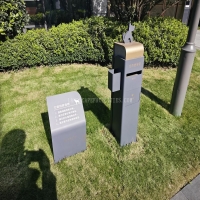Welcome to the website for landscape facilities products and knowledge.
Are there any recommended placement guidelines to avoid damage from sprinklers or irrigation systems?
Proper sprinkler placement is crucial for maintaining an efficient irrigation system while preventing damage to both your landscaping and the sprinklers themselves. Understanding these fundamental guidelines can save you from costly repairs and ensure optimal water distribution throughout your property.
The positioning of sprinkler heads relative to hardscapes and structures requires careful consideration. Maintain a minimum distance of 6 inches between sprinkler heads and any permanent structures, including foundations, walls, and fences. This buffer zone prevents water damage to building materials and reduces the risk of physical impact damage to sprinkler heads from routine maintenance activities or accidental collisions.
When installing sprinklers near walkways, driveways, or patios, position them at least 12 inches away from the edges. This placement prevents tripping hazards and protects sprinkler heads from damage caused by foot traffic, vehicles, or outdoor furniture. For rotary sprinklers, ensure the spray clears adjacent surfaces by several inches to prevent water waste and surface erosion.
The spacing between sprinkler heads depends on their spray pattern and water pressure. Generally, space spray heads 12-18 feet apart, while rotary heads can be placed 15-30 feet apart depending on their specific throw radius. Always follow the manufacturer's recommendations for your particular sprinkler model, as incorrect spacing can create dry spots or overwatered areas in your landscape.
Consider the spray angle and trajectory when positioning sprinklers. Avoid directing water toward buildings, fences, or paved areas where runoff can cause damage or waste water. Instead, angle sprays to overlap slightly with adjacent sprinklers, creating uniform coverage across your lawn or planting beds. This head-to-head coverage principle ensures every area receives adequate irrigation without gaps.
Install sprinklers at appropriate heights relative to the surrounding landscape. Pop-up heads should clear the tallest grass blades by at least 2 inches to prevent obstruction of the spray pattern. In shrub beds, use shrub-style heads that rise above the plants, while in lawn areas, ensure heads retract completely to avoid damage from lawn mowers and other equipment.
Protect sprinkler heads from mechanical damage by installing them in safe zones away from high-traffic areas. Consider using protective covers or guard systems in locations where damage is likely, such as along sports fields or playground perimeters. Additionally, mark sprinkler locations with flags or subtle markers to prevent accidental damage during landscaping projects.
Regular maintenance plays a vital role in preventing sprinkler damage. Periodically check for misaligned heads, damaged nozzles, or obstructions that might affect performance. Adjust heads that have been knocked out of position and replace broken components promptly to maintain system efficiency and prevent water from spraying onto unintended surfaces.
During seasonal changes, take extra precautions to protect your irrigation system. In colder climates, properly winterize sprinklers to prevent freeze damage, while in growing seasons, monitor vegetation growth that might obstruct spray patterns. Trim plants and grass regularly to maintain clear zones around sprinkler heads, ensuring uninterrupted water distribution.
By implementing these sprinkler placement guidelines, you can create an efficient irrigation system that minimizes damage risks while promoting healthy plant growth. Proper installation combined with routine maintenance will extend the lifespan of your sprinkler system and protect your landscape investment for years to come.
Related search:

Recommendation
Outdoor cat and dog feces trash can; Community pet trash can; Metal multi-color design